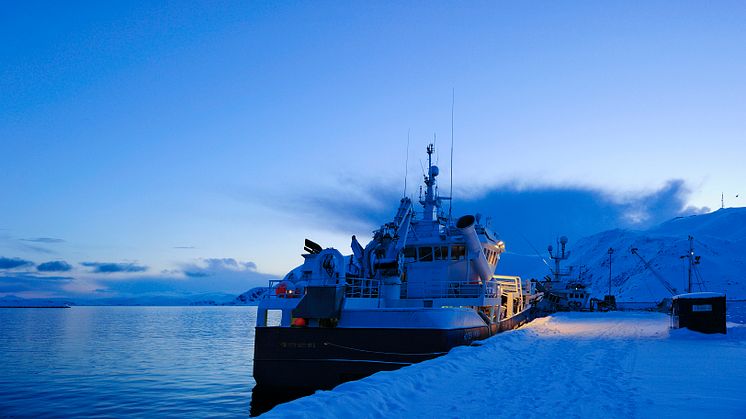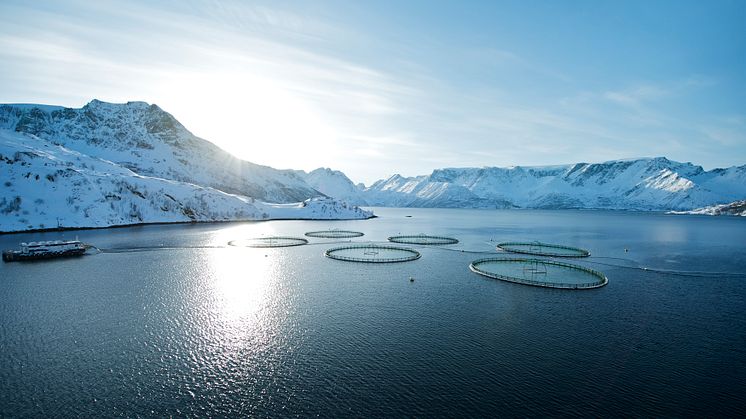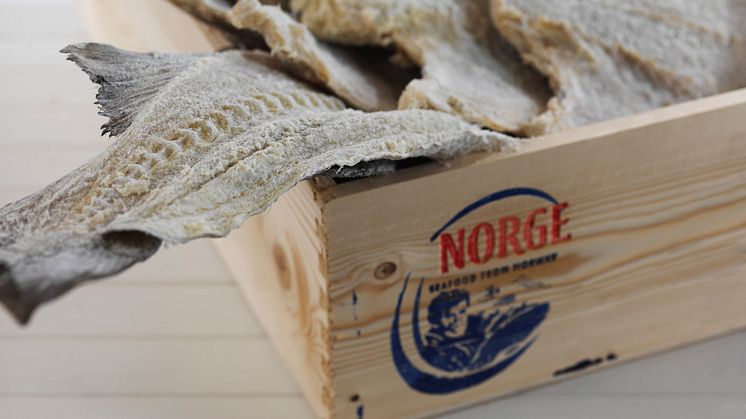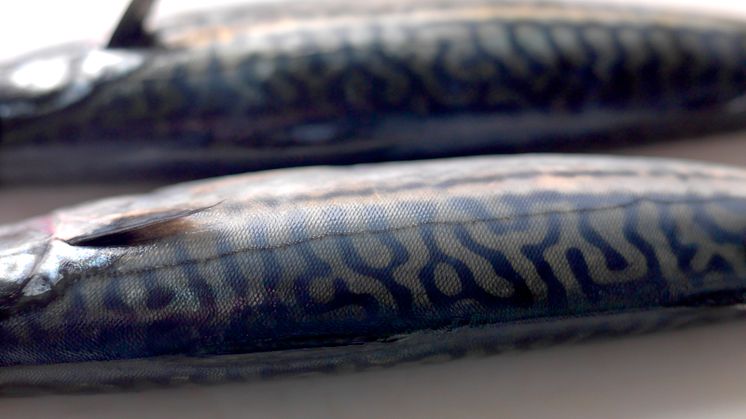
Press release -
Record Year For Norwegian Seafood
Norway exported seafood worth NOK 6.6 billion in November, the same monthly total as November 2013. However year to date seafood exports have reached NOK 62.5 billion, an increase of NOK 7 billion, or 13 per cent, compared with the same period last year. This represents a new export record, surpassing the totals for the whole of 2013 by almost NOK 900 million.
"By the start of December, we can state that 2014 has been the best year ever for Norwegian seafood exports. Demand for Norwegian seafood remains very strong and we await with keen interest the totals for the full year", says Christian Chramer, Communications Director for the Norwegian Seafood Council. Year to date seafood exports are NOK 878 million higher than in 2013.
"Exports of clipfish increased sharply due to the popular tradition of serving bacalao for Christmas. In Portugal eight out of ten consumers surveyed said they were planning to eat traditional clipfish-based christmas dishes. Salmon price increases from November 2013, combined with slightly lower salmon volume reduced the total value of salmon exports somewhat. In the pelagic industry it is worth noting the record large amounts of mackerel exported from Norway. An increase of NOK 189 million compared with November 2013", says Chramer.
Price up, volume down for salmon
Norway exported salmon to a value of NOK 3.9 billion in November. This marks a decrease of NOK 96 million, or 2 per cent, compared with November 2013. Year to date salmon exports total NOK 39.6 billion, an increase of NOK 4.4 billion, or 12 per cent, compared with the same period in 2013. The average price for whole fresh Norwegian salmon in November was NOK 41.12 per kg against NOK 39.01 per kg in November 2013. As in the previous month, Poland and France remain the biggest buyers of Norwegian salmon.
Trout exports were worth NOK 176 million in November 2014. A decrease of NOK 71 million, or 29 per cent from November 2013. Year to date, exports of trout have reached NOK 2.2 billion. This is an increase of NOK 54 million, or 3 per cent, compared with the same period in 2013. The biggest buyers of trout from Norway in November were Belarus and China.
Down for herring, up for mackerel
Exports of herring fell by NOK 114 million, or 20 per cent in November to a total value of NOK 464 million. So far this year, exports of herring have totalled NOK 2.3 billion. This represents a decline of NOK 453 million, compared with the same period in 2013. Poland and Lithuania were the biggest export markets for herring in November.
Mackerel exports increased in November by NOK 189 million, to reach a total of NOK 598 million. Year to date exports of mackerel increased by NOK 1.2 billion to NOK 3.9 billion, compared with the same period in 2013. Japan and China were the biggest markets for Norwegian mackerel in November.
Growth for bacalhau and saltfish
Exports of clipfish increased by NOK 164 million in November, to reach a total NOK 413 million. This is an increase of 65 per cent compared with November 2013. Export totals are distributed between cod, worth NOK 276 million, saithe worth NOK 110 million on saithe, with the remainder split between ling, tusk and other cod fish. The biggest market for cod clipfish in November was Portugal, whilst Brazil was the biggest market for saithe clipfish.
Exports of salted fish, including fillets increased by 4 million in November and ended totaling NOK 45 million. 39 million of these are cod. Portugal is the biggest market for salted fish.
Fresh and frozen cod
Exports of fresh cod from fisheries, including fillets increased by NOK 27 million in November to a total export value of NOK 91 million. In November, exports of frozen cod, including fillets, were up by NOK 54 million to total NOK 258 million. Almost all the fresh cod was exported to the EU.
57 per cent of frozen cod sales were to EU countries, and 41 per cent to China.
Topics
Categories
The Norwegian Seafood Council is a joint marketing organisation for the Norwegian seafood industry and invests NOK 495 million annually in the development of markets for Norwegian seafood products. The council has its head office in Tromsø and offices in thirteen of Norway’s most important seafood markets. The Norwegian seafood industry finances the activities of the council through fees levied on all exports of Norwegian seafood.
The Norwegian Seafood Council is a public company owned by the Ministry of Trade, Industry and Fisheries.






